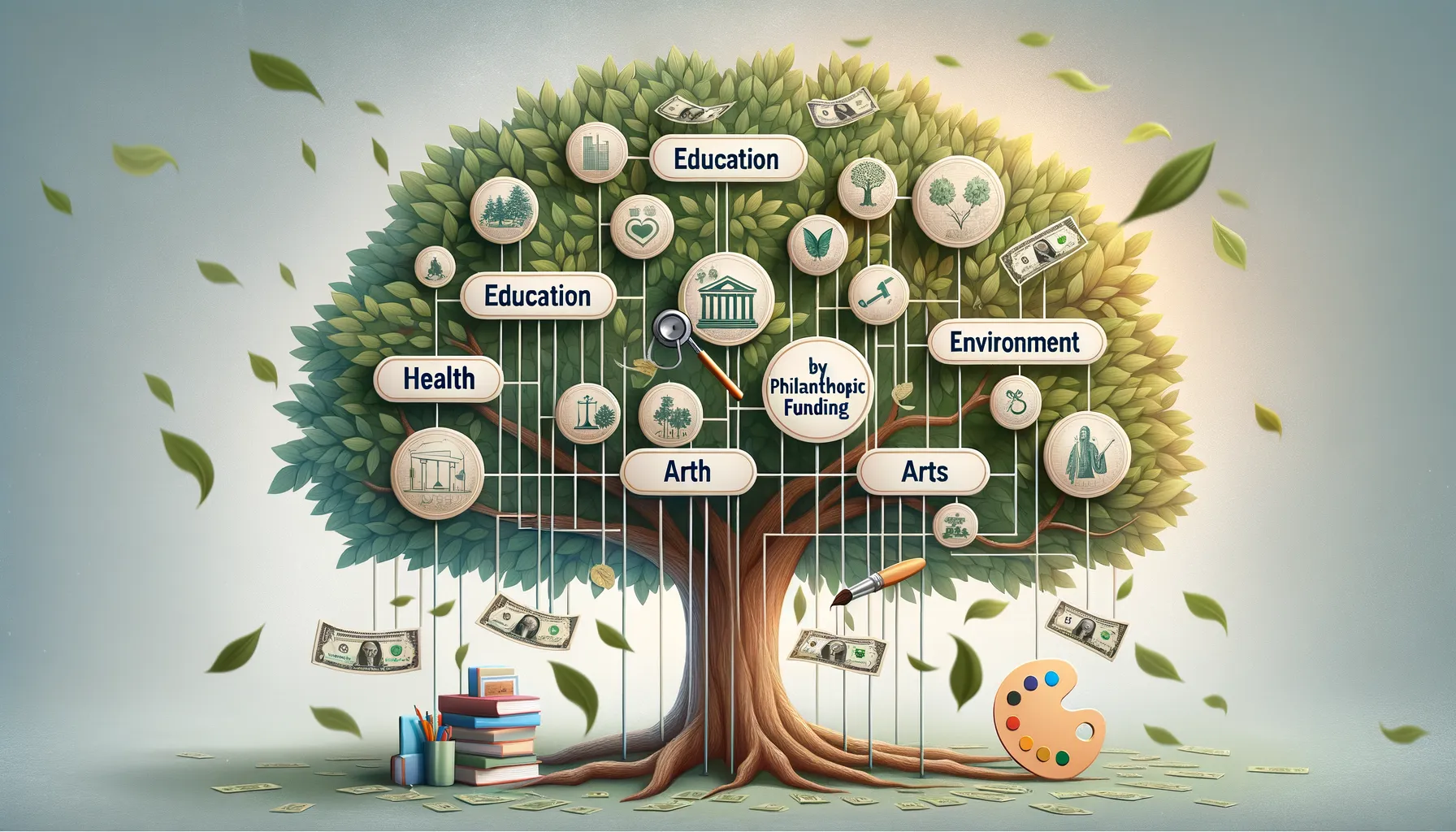Introduction to Philanthropy in Medical Research
When Generosity Fuels Discovery
Imagine this: a mother finally sees her child cured of a disease once thought untreatable. A grandfather gets to celebrate another birthday thanks to a revolutionary therapy. These moments of hope and triumph often have one critical element behind them — philanthropy.
At its core, philanthropy in medical research isn’t just about writing big checks. It’s about people coming together, pooling their resources to fuel something extraordinary: bold ideas, groundbreaking experiments, and new technologies that may transform patients’ lives. Picture it as the spark igniting a fire where traditional funding might hesitate.
Why does it matter? Because public funding alone can’t always shoulder the heavy financial demands of cutting-edge research. Here’s what makes philanthropic giving so unique:
- It empowers scientists to take risks and explore untested theories.
- It accelerates research timelines, bringing treatments to patients faster.
- It supports rare or overlooked conditions that often slip through the cracks of governmental budgets.
This isn’t just about dollars and cents — it’s about creating a world where medical “what-ifs” turn into life-changing “why nots.”
Impact of Philanthropic Contributions on Breakthroughs

Transforming Hurdles into Hope
Every once in a while, a seemingly impossible mountain is moved—not by machinery, but by the sheer force of generosity. That’s exactly what philanthropic contributions do for medical research: they take the barriers that block the road to breakthroughs and dismantle them one brick at a time. Take, for example, the development of cutting-edge therapies for rare diseases. These conditions often languish in obscurity because they don’t attract commercial funding. But thanks to visionary donors and organizations, these so-called “orphan diseases” are finally finding their champions.
Philanthropy doesn’t just fund science—it injects it with boldness. It fuels researchers to ask “what if?” instead of settling for “what’s realistic.” In fact, many of the medical marvels we now take for granted—think CRISPR gene editing or mRNA vaccines—stand on a foundation first laid by generous donations.
- Seed funding: Early-stage research often relies on donor grants when traditional funding hesitates.
- Rapid innovation: Donations can accelerate timelines, allowing scientists to race diseases rather than crawl behind them.
- Global reach: Philanthropy crosses borders, bringing life-saving solutions to underserved communities worldwide.
What might feel like a drop in the ocean to one person could be the wave that carries us all forward.
Key Areas Supported by Philanthropic Funding

Pioneering Frontiers in Rare Disease Research
Imagine the anguish of waiting years for a diagnosis—let alone a treatment—for a rare condition affecting your child or loved one. This is where philanthropy steps in, acting as the lifeline to underfunded research. Rare diseases often fall through the cracks of corporate funding because of their limited market potential. But thanks to visionary donors, progress is happening.
From groundbreaking gene therapies to revolutionary drug development, philanthropic contributions bring hope to families living with these “medical mysteries.” For example, initiatives like the work of the Cystic Fibrosis Foundation have directly led to life-extending treatments. We’re not talking vague theories here; this is real, tangible impact measured by healthier lives and extended tomorrows.
- Funding early-stage research that pharmaceutical companies shy away from.
- Creating dynamic collaborations between scientists, clinicians, and patient advocacy groups.
- Advancing precision medicine tailored for small, unique patient groups.
Accelerating Cancer Breakthroughs One Gift at a Time
Every donation towards oncology research feels like planting seeds in a desert—it turns barren landscapes of uncertainty into lush fields of possibility. Take the rise of immunotherapy as an example. It’s no accident that breakthroughs like CAR-T cell therapy flourished with philanthropic support.
While large-scale cancer programs receive steady funding, philanthropy often fuels ideas considered too “risky” by conventional funders. It’s the bold dreams—the moonshots—that transform cancer care:
- Developing targeted therapies that minimize side effects for patients.
- Exploring innovative approaches like liquid biopsies for early detection.
In the world of medical research, boldness thrives where generosity ignites it.
Challenges and Opportunities in Philanthropic Medical Research

The Tug-of-War: Navigating Barriers in Philanthropic Research
Philanthropic medical research is a field brimming with ambition, yet it’s not without its thorns. Picture this: a scientist on the verge of a breakthrough may still find themselves wrestling with unexpected hurdles. One major challenge? The delicate dance between donor intent and actual research needs. While some philanthropists prefer funding trendy topics like cancer or Alzheimer’s, rarer diseases often stand in the shadows, waiting for their moment in the spotlight.
Navigating such barriers requires creativity. Researchers often need to tell stories as compelling as their scientific endeavors—to paint pictures that connect both the head and the heart of potential donors. After all, how do you explain funding an experiment with no immediate results when giving to a hospital wing feels more “tangible”?
- Administrative roadblocks: Complex grant structures and reporting demands can slow down even the most exciting projects.
- Short-term expectations: Some donors crave quick wins, yet groundbreaking cures often take decades of trial and error.
Spotting Horizons: The Transformative Power of Risk
What makes philanthropy magical—and maddening—is its unpredictability. When visionary donors embrace risk, they fund ideas many others wouldn’t dare touch. This courage fuels innovation. Think of the breakthroughs made possible by bold investments in mRNA vaccines—a moonshot that redefined medical possibilities. Opportunities lie exactly where risks seem highest. Could there be a more thrilling leap of faith?
Future Directions and Innovations Through Philanthropy

Revolutionizing Tomorrow: New Horizons in Medical Research
Picture a world where rare diseases are no longer mysteries but solvable puzzles. That’s the kind of future philanthropy is sculpting, and the tools? Bold ideas, unshakable commitment, and a spark of hope. The beauty of philanthropy lies in its ability to pivot – to take risks where traditional funding hesitates, to nurture the seeds of innovation that may otherwise go unfunded.
Think about it: how many lifesaving drugs now on pharmacy shelves started as long shots? Philanthropic dollars fuel risky ventures with huge potential. For instance, imagine an AI-powered device diagnosing cancer before symptoms appear, or revolutionary gene-editing techniques offering cures for inherited disorders. These aren’t just far-off dreams; they’re tangible goals made possible by visionary donors and relentless scientists.
- AI and machine learning to decode complex diseases faster than ever before.
- Regenerative medicine: growing organs in labs, dramatically transforming transplants.
- Investments in pandemic preparedness, ensuring the world is better equipped next time.
The Ripple Effect of Courageous Giving
When one donor funds a groundbreaking idea, the ripple can reach every corner of the globe. Take CRISPR technology, for example – initially funded by early-stage philanthropy, it’s now unlocking therapies that were unimaginable a decade ago.
And let’s not forget grassroots initiatives driven by everyday people pooling resources together. A single contribution might seem small, but combined with millions of others? It creates waves that push humanity further. These bold thinkers – donors and researchers alike – remind us that the real measure of progress isn’t speed; it’s daring to ask, “Why not?” and then doing something about it.
